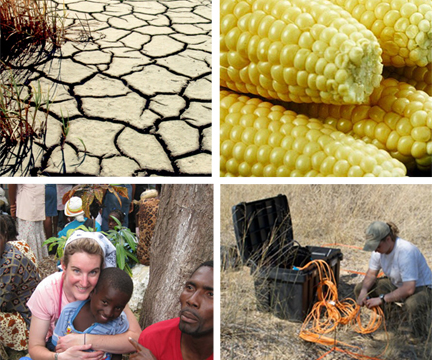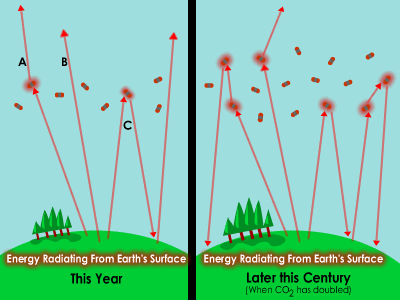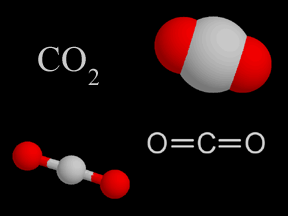Click on image for full size
Starting at the top left and moving clockwise, permissions were granted from USGS, USDA, Dr. Caylor of Princeton University and Bridget Holtz.
Related links:
Changing Planet: Withering Plants – Stressing Over Lost Water (A Classroom Activity)
Changing Planet Navigation Page
Effects of Climate Change Today
Earth’s Climate and Global Change
Heat Waves, Storms and Drought - Extreme Events and Human Health
The Red Cross - An Aid Agency that Serves People around the World
Withering Crops - An Effect of Global Warming
"Though we often take the plants and trees around us for granted, almost every aspect of our lives depends upon them. They feed us, cloth us, absorb carbon dioxide, provide us with oxygen, and give us building materials and medications. When drastic changes occur to the vegetation around us, our health, economy, and environment are all affected." (from a NASA Earth Observatory Article)
Our Earth's global temperature is drastically changing; it is warming due to the addition of heat-trapping greenhouse gases which are increasing dramatically in the atmosphere as a result of human activities. Global warming changes the amount of precipitation received in different regions of the world, and it also increases the intensity and frequency of extreme weather events such as droughts and heat waves. These drastic changes are affecting vegetation already, with more changes yet to come.
Is there a bright side to this story? The Earth is a place of extreme bounty - its crops and plants feed over 6.8 billion people worldwide, as well as forming the food web base for more than 1.25 million species of animals. One of the main greenhouse gases that humans contribute to the atmosphere that is a cause for increased global warming is CO2, carbon dioxide. More CO2 can actually be beneficial to plant growth. It is a necessary ingredient for photosynthesis, along with water from the soil and energy from the Sun. Increased CO2 concentrations can actually increase the rate of photosynthesis, though scientists agree that in real world situations, other factors that accompany higher CO2 concentrations combine to make photosynthesis decline.
Another consideration to take into account when talking about crop productivity and global warming is the world's population. Researchers project that the Earth's population could surpass 9 billion people by 2050. That's over two billion additional people that need to be fed every day. Combine this increase in global population with the fact that many plants are susceptible to stress due to warmer temperatures and drier conditions that are brought on by climate change, and it is clear we are on troubling path.
How do plants deal with increases in temperature? During the process of transpiration, plants lose water through tiny holes in their leaves called stomata. Because the water evaporates from the surface of the leaf, transpiration helps plants stay cool, in the same way perspiration keeps humans and animals cool. So the process of plants losing water through their stomata prevents overheating of the plant. Global warming is also projected to bring less precipitation or increased drought conditions in many parts of the world. How do plants deal with a lack of water? When less water from the soil is available, the plant closes the stomata on its leaves so water doesn't escape from the plant. Unfortunately, closed stomata don't let in necessary CO2 for photosynthesis and plant growth becomes stunted -- the plant must now choose between keeping its own water (stomata closed) and gaining food (stomata open). At the point when the plant cannot survive any more without food, it will be forced to open its stomata, letting its own water escape. The plant, which is fighting to survive, becomes wilted or withered.
Increased temperatures and drier soil conditions bring about crop withering, and crop withering has huge social implications. Even in the last decade, watching the world news would have tipped you off to the fact that drought produces crop withering and crop withering means food shortages as could be seen in Ethiopia in 2000, Niger in 2005 or Somalia and Haiti later in 2008. And before then, many were touched by photos and news that came out of the Sahel region of Africa, where thousands of people starved when the area's vegetation dried up during an extended drought. Of course, in what are very complex situations, drought and overheating, crop failure and depleted livestock can lead to famine, political unrest and in extreme cases, military conflicts like civil wars. Lest you think that these happenings will only occur on a continent or island far away, the IPCC has projected that Africa, Asia, Australia and New Zealand, Europe, Latin America, and small islands around the world will be adversely affected by climate warming and that crop yields would decrease to a certain extent in those areas. For those areas not as adversely affected (like North America and the Arctic), peoples in those regions will be affected in that rising temperatures and the heat and drought it brings will in the long run force food prices to rise as crops do wither and fail around the world. And, of course, as a global community, we are all affected when environmental problems cause the suffering of people around the world, whether they are the root of the problem like famine or only part of the problem like in the Darfur Conflict. These events that cause casualties, mass migrations of people away from their homeland, and the suffering of those that can't defend themselves become humanitarian crises that affect us all.
Luckily, people around the world and scientists are helping with these crop withering problems that could cause global crises. One way scientists are helping is through the Famine Early Warning Systems Network. FEWS NET is a decision support system that helps target more than two billion dollars of food aid to more than 40 countries each year. Through this system, scientists are helping with early identification of agricultural drought that might trigger food insecurity. Also, agricultural research worldwide is working on how to increase the yield of crops without consuming more resources like water or fertilizer. The research of these complicated subjects will no doubt lead to great discoveries that will ultimately feed the growing population of the world.
Even though global warming is in part brought about by increased CO2 and increased CO2 can actually increase the rate of photosynthesis, researchers have shown that overall photosynthesis diminishes with rises in air temperature. Many plants, especially grain crops that feed the people of our world are susceptible to warmer temperatures and dryer conditions/drought brought on by climate change. Our hope is that science, research and technology will bring about feast and not famine as we pore over these issues and figure out new and innovative solutions to the challenges set before us.















